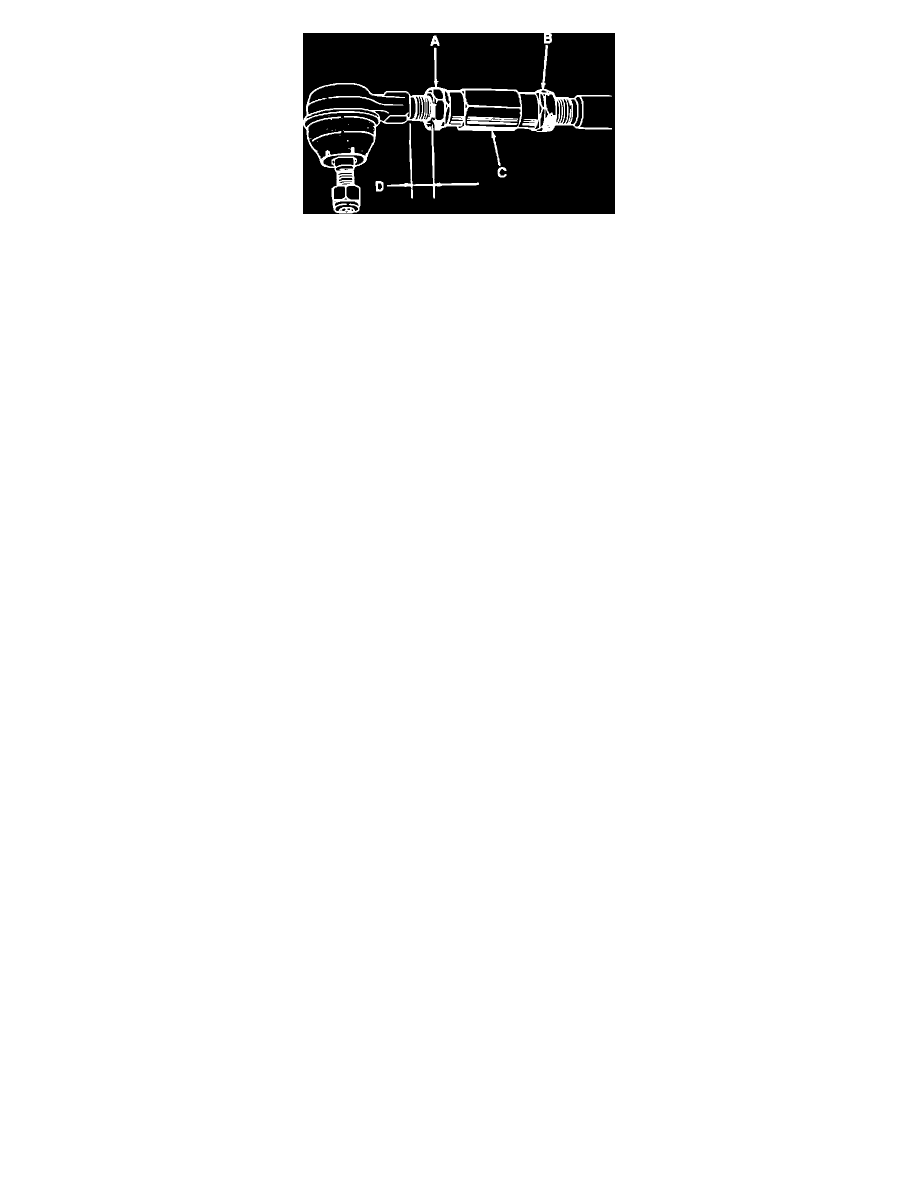Medallion L4-2165cc 2.2L (1988)

Fig. 2 Toe-out adjustment
TOE-OUT SETTING, ADJUST
1. Loosen tie rod locknut (A), and steering arm locknut (B). Locknut (A) has righthand threads. Locknut (B) has lefthand threads.
2. Turn each adjusting sleeve (C) inward or outward to obtain the required toe-out reading.
3. The number of threads (D) visible at each tie rod end should be approximately the same.
4. Torque locknuts (A) and (B) to 26 ft. lbs. Do not allow the adjusting sleeve (C) to rotate while tightening the locknuts.
STEERING WHEEL CENTERING
Do not use the tie rod adjusting sleeves to center the steering wheel. The correct method of centering the steering wheel is to remove the steering
wheel and center it on the steering shaft as necessary. After centering torque steering wheel attaching nut to 30 ft. lbs.
Preliminary Inspection
NOTE: Before proceeding with any check/adjustment procedure, ensure vehicle ride height is checked and/or adjusted as described previously. Also the
following information is for front wheel alignment only. Rear wheel alignment is factory set and cannot be adjusted.
CASTER & CAMBER ANGLES
Caster and camber are built-in angles and are not adjustable. If either angle is incorrect, it will be necessary to inspect and/or replace the suspension or
steering component contributing to the incorrect angle. Refer to "Alignment Diagnosis."
The relationship between left and right caster/camber angle is critical. A side-to-side difference of more than 1° may result in a pull to one side.
If the vehicle pulls to one side, the condition usually is a result of excessive camber or insufficient caster on the pulling side. Incorrect caster/camber is
not the only cause of vehicle pull. Brake drag, a damaged or underinflated tire, body damage or damage to the steering components can all cause a
pulling condition.
TOE-OUT ANGLE
The front suspension is set/adjusted for front wheel toe-out. The toe setting is adjusted only after the steering gear has been locked in a centered
position using tool Dir.1067 or equivalent. Refer to "Toe-Out, Adjust" for service procedure.
To identify a incorrect toe condition, excessive toe-out will wear the inner edge of each front tire. Insufficient toe-out (or a toe-in condition), will wear
the outer edge of each front tire.
